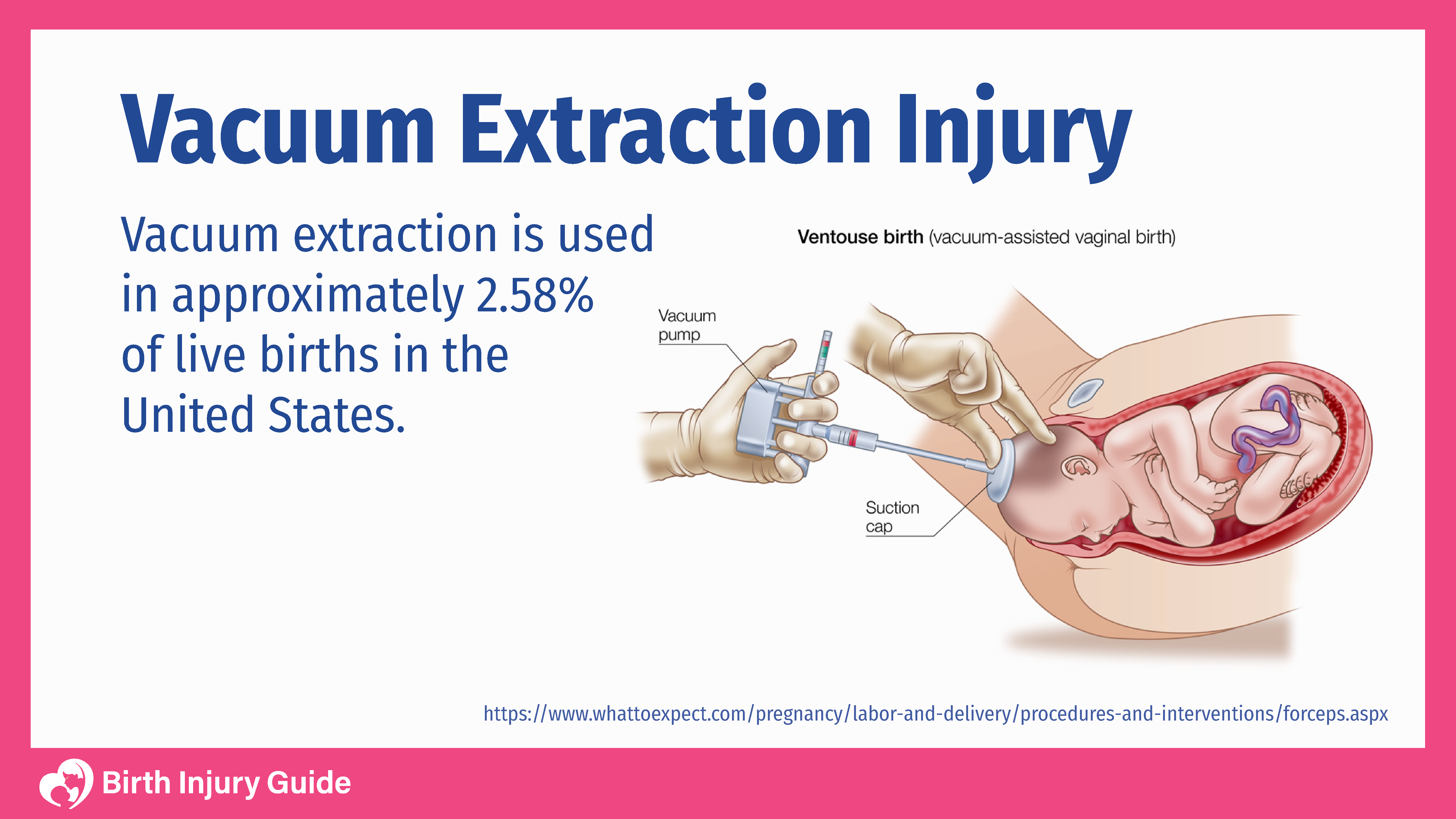
Vacuum Extraction Injury
Even though birth-assisting tools have been used for decades, the incidences of birth injuries associated with their use during delivery still occur. A vacuum-extraction tool, although beneficial during difficult deliveries, can cause birth injuries and medical issues if used improperly. Read on to learn more about vacuum extraction injury and the possible consequences.
What is Vacuum Extraction?
When a difficult labor takes too long, a doctor may choose to use a vacuum extractor to assist with delivery. During a contraction, the doctor will apply a soft cup or a hard cup to the top and back of the baby’s head and will use suction to assist in pulling the baby out.

What Kind of Injury Can a Vacuum Extractor Cause?
The U.S. Food and Drug Administration (FDA) has warned that using a vacuum extractor can unnecessarily risk the baby’s health. There should be appropriate indications, such as:
- The baby should not be proportionately too large for the mother’s pelvis
- Prolonged second stage of labor
- The mother should be fully dilated
- Fetal distress
- The baby’s head shouldn’t be too far up in the birth canal
- The baby should not require repositioning for proper delivery
Birth injuries vary depending on how the vacuum extractor was used (or misused) but generally, the injuries include:
- Skull fractures
- Retinal hemorrhages
- Brachial plexus injuries
- Shoulder dystocia
- Erb’s palsy
- Klumpke’s Palsy
- Brain hemorrhages
- Cerebral palsy
Some of these conditions, if untreated, may lead to paralysis, intellectual disability and other life-long conditions. Some conditions, such as a brain hemorrhage, if left untreated could even lead to death.
What are the Symptoms of Vacuum Extraction-Related Birth Injuries?
Because the types of injuries vary, symptoms of a vacuum extraction injury also vary. For example, if the injuries are primarily related to the brachial plexus nerves (the nerves between the neck and shoulder), the child’s symptoms may be more related to arm weakness, paralysis or a claw-like hand. Those symptoms would not be the same symptoms as related to, say, skull fractures.
However, because a vacuum extraction is placed on the scalp, most of the injuries are head or brain-related. The two most common symptoms are lethargy and seizures, which may happen within hours of birth.
Are Vacuum Extraction Injuries Preventable?
Vacuum extraction injuries are preventable. Sometimes a mother can request that a doctor uses forceps instead of a vacuum extractor, and other times during delivery, the mother can ask the doctor what station the baby is at before she approves the use of a vacuum extractor.
If the parents find out after the fact that the baby has a birth injury due to vacuum extraction, there are ways to treat the injury, though long-term recovery is slow. Sadly, some children may not make a full recovery at all. Ultimately, it depends on how severe the injuries are.



